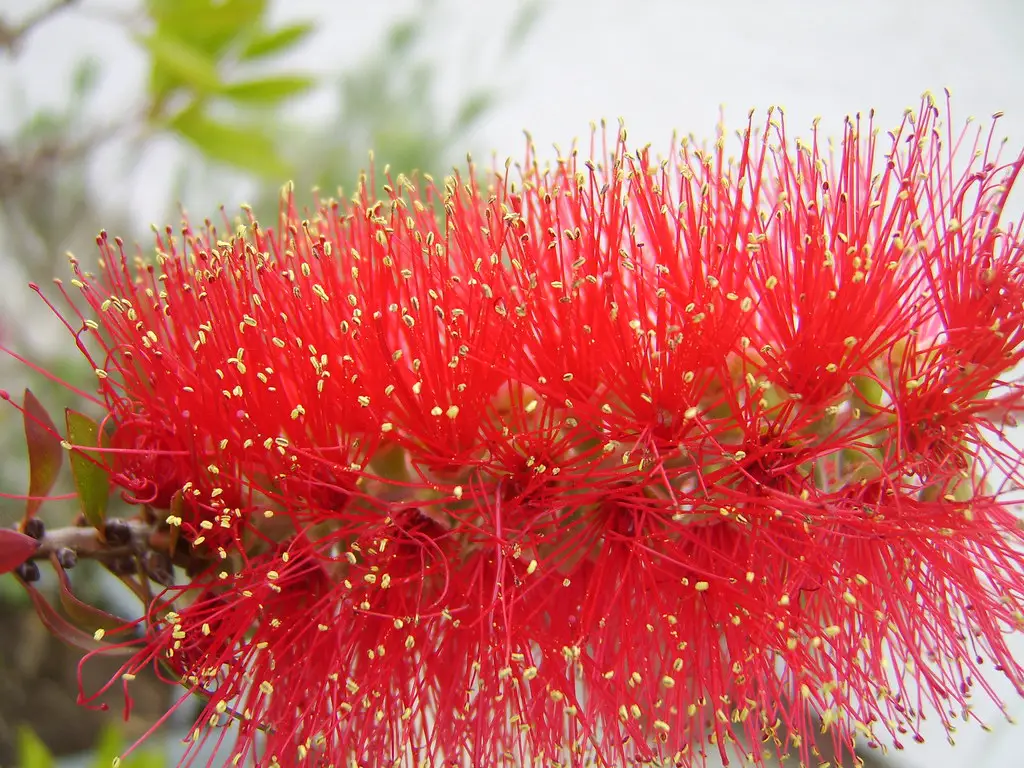The Bottle Brush plant, named for its unique flowers that resemble a traditional bottle brush, is a striking and colorful addition to gardens, landscapes, and even indoor environments. Its vibrant red, pink, or white blooms are accompanied by dense foliage, providing both aesthetic appeal and habitat for wildlife.
Native to Australia, the Bottle Brush (genus Callistemon) includes over 30 species, all of which bear the distinctive brush-like flowers. These plants are not only attractive but also hardy and adaptable, growing well in various climates and soil conditions.
The Bottle Brush’s flowers attract pollinators such as bees and hummingbirds, making it an essential plant for maintaining local ecosystems. Known for its resilience and low-maintenance nature, the Bottle Brush has become popular in gardens around the world, where it brings a touch of the exotic and a splash of color.
| Attribute | Details |
|---|---|
| Common Names | Bottle Brush |
| Botanical Name | Callistemon |
| Family | Myrtaceae |
| Plant Type | Shrub/Tree |
| Mature Size | 3-15 feet tall, depending on species |
| Sun Exposure | Full Sun |
| Soil Type | Well-drained, sandy or loamy soil |
| Hardiness Zones | 8-11 |
| Native Area | Australia |
Bottle Brush Care
Caring for a Bottle Brush plant is relatively straightforward, making it suitable for both novice and experienced gardeners. While it thrives in full sun and well-drained soil, it is also adaptable to various conditions and can withstand drought once established.
The Bottle Brush does well in coastal areas, as it’s resistant to salt spray. Regular pruning helps maintain its shape, and while it benefits from feeding, it is not a heavy feeder. Providing adequate water during the first year helps establish the root system, after which it becomes more drought-tolerant.
Light Requirement for Bottle Brush
The Bottle Brush thrives in full sun, which encourages vibrant flowering. While it can tolerate some shade, reduced sunlight may lead to fewer flowers and a leggy appearance. Ensuring at least six hours of direct sunlight daily helps maintain the plant’s health and beauty.
Soil Requirements for Bottle Brush
Well-drained sandy or loamy soil is ideal for the Bottle Brush. It can tolerate poor soil and even some clay, but good drainage is crucial to prevent root rot. A slightly acidic to neutral pH range (6.1 to 7.5) is preferable.
Water Requirements for Bottle Brush
While the Bottle Brush is drought-tolerant once established, regular watering is essential during its first year of growth. Once established, it can withstand dry spells, but deep watering during extended dry periods helps keep the plant healthy.
Temperature and Humidity
Bottle Brush plants are well-suited to warm climates and can tolerate temperatures down to 20°F. They are not particularly fussy about humidity, making them versatile in different weather conditions.
Fertilizer
A slow-release fertilizer applied in the spring, formulated for shrubs and trees, provides the nutrients necessary for growth and flowering. Over-fertilizing should be avoided, as it can lead to excessive foliage at the expense of blooms.
Pruning Bottle Brush
Regular pruning helps maintain the shape of the Bottle Brush and encourages new growth. It’s best to prune just after flowering, removing any dead or diseased branches and shaping as desired.
Propagating Bottle Brush
Propagation is usually done through cuttings or seeds. Cuttings taken in summer and treated with rooting hormone can be planted in a well-draining soil mix. Seeds can be harvested from the plant’s capsules and sown in spring.
How To Grow Bottle Brush From Seed
Growing Bottle Brush from seed is an exciting yet challenging process. Seeds should be soaked in warm water overnight before sowing in a seed-raising mix. Keeping them warm and moist until germination, usually within a month, is crucial.
Common Pests & Plant Diseases
Aphids
Aphids can be treated with insecticidal soap or natural predators like ladybugs.
Root Rot
Caused by overly wet soil; ensuring proper drainage can prevent this issue.
Common Problems With Bottle Brush
Poor Flowering
This often results from inadequate sunlight or over-fertilizing. Correcting these conditions usually resolves the issue.
Frost Damage
In cooler zones, frost can damage the plant. Providing protection during frost or planting in a sheltered location can mitigate this problem.
Pro Tips
- Plant in full sun for best flowering.
- Ensure well-drained soil to prevent root rot.
- Water consistently during the first year, then reduce as needed.
- Prune after flowering to maintain shape and encourage new growth.
- Use a slow-release fertilizer sparingly in the spring to support growth without inhibiting flowering.




